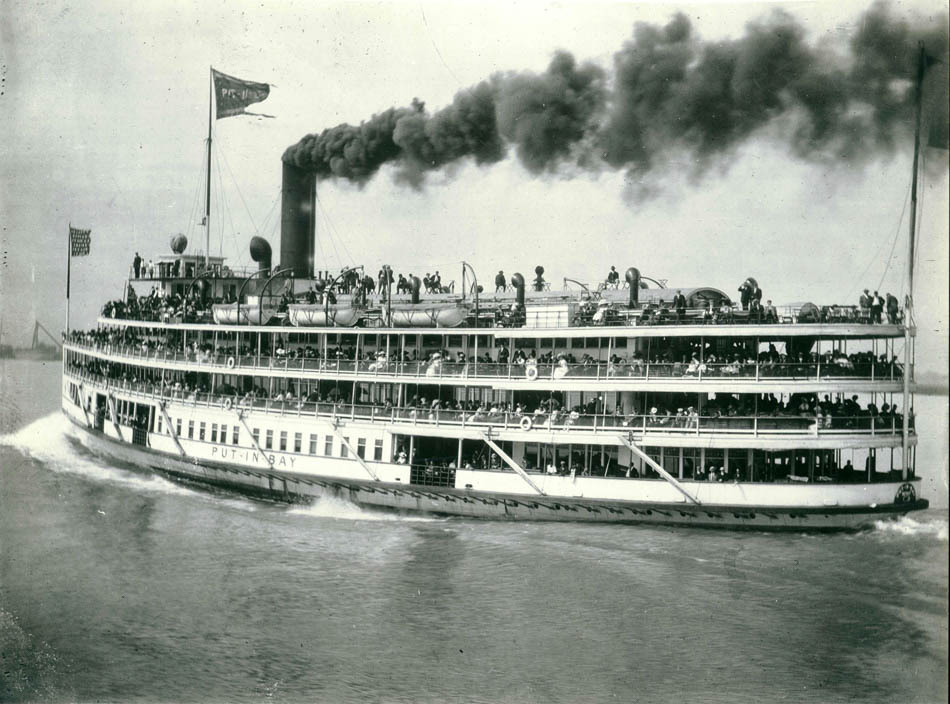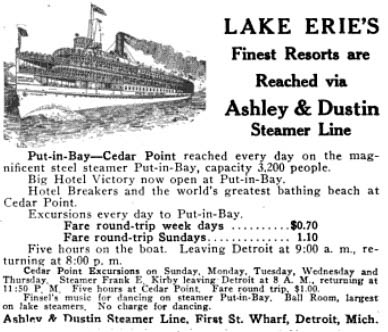The steamboat Put-in-Bay travelled from Detroit to Sandusky from 1911 until 1949, with stops at Put-in-Bay and Cedar Point.
Thousands flocked to the yards of the Detroit Shipbuilding Co. in Wyandotte, Mich., on March 25, 1911, to witness the launch of Hull No. 186. William McFall Heyser, eight years old at the time, christened the steamboat the Put-In-Bay by breaking a bottle of Sandusky champagne over it. With four decks and a length of 240 feet, she could accommodate more than 3,000 people. When adjusted for inflation, a round-trip fee in 1918 was 70 cents on weekdays and $1.10 on Sundays, equating to about $11 and $17.50 in today’s currencies, respectively.
She was propelled by four coal-fired Scotch boilers and a 2,950 ihp four-cylinder triple-expansion steam engine. The Put-in-Bay was the largest excursion boat designed for cruising the Detroit River when she was launched.
The Put-in-Bay was part of the Ashley and Dustin steamer line and was built by the Detroit Shipbuilding Company. The skipper hailed locals with three long and two short whistles as she cruised along the Detroit River. There were four decks at the Put-in-Bay. Passengers danced in the ballroom of the boat to the music of an orchestra conductor.
According to the Marine Historical Society of Detroit, the steamship began charting its course a little further north in 1949, when she was sold and put on the Detroit-to-Port Huron run, with stops along the route. In 1951, she came to a halt.
U.S. Marshall sold her for scrap in May 1953 to settle a debt. She was dragged out into Lake St. Clair on October 3, 1953, and set ablaze to make it simpler for wreckers to get at her steel skeleton. The hull of the ship was dismantled at River Rouge, Michigan.








